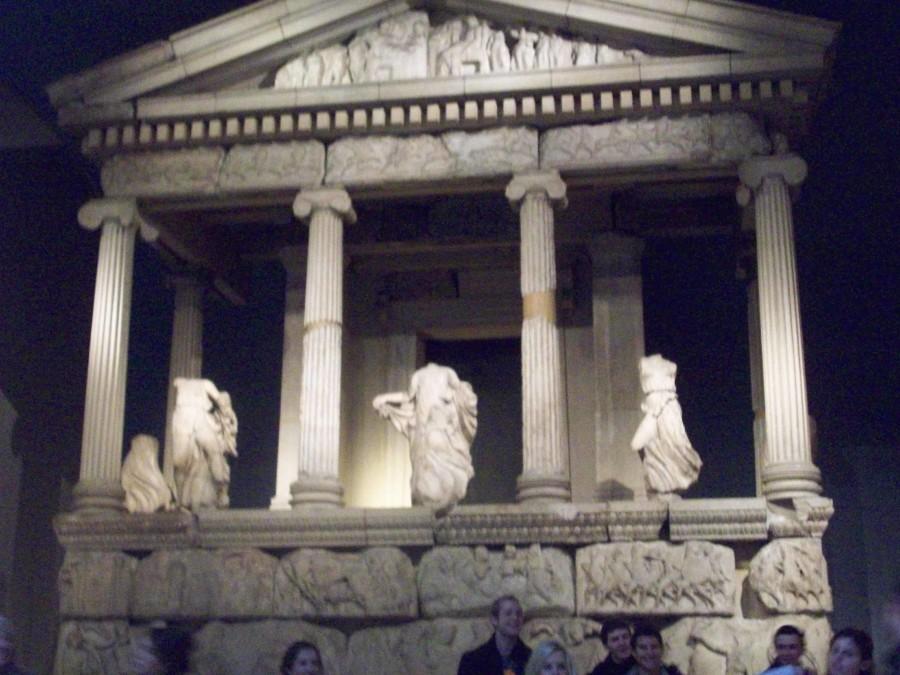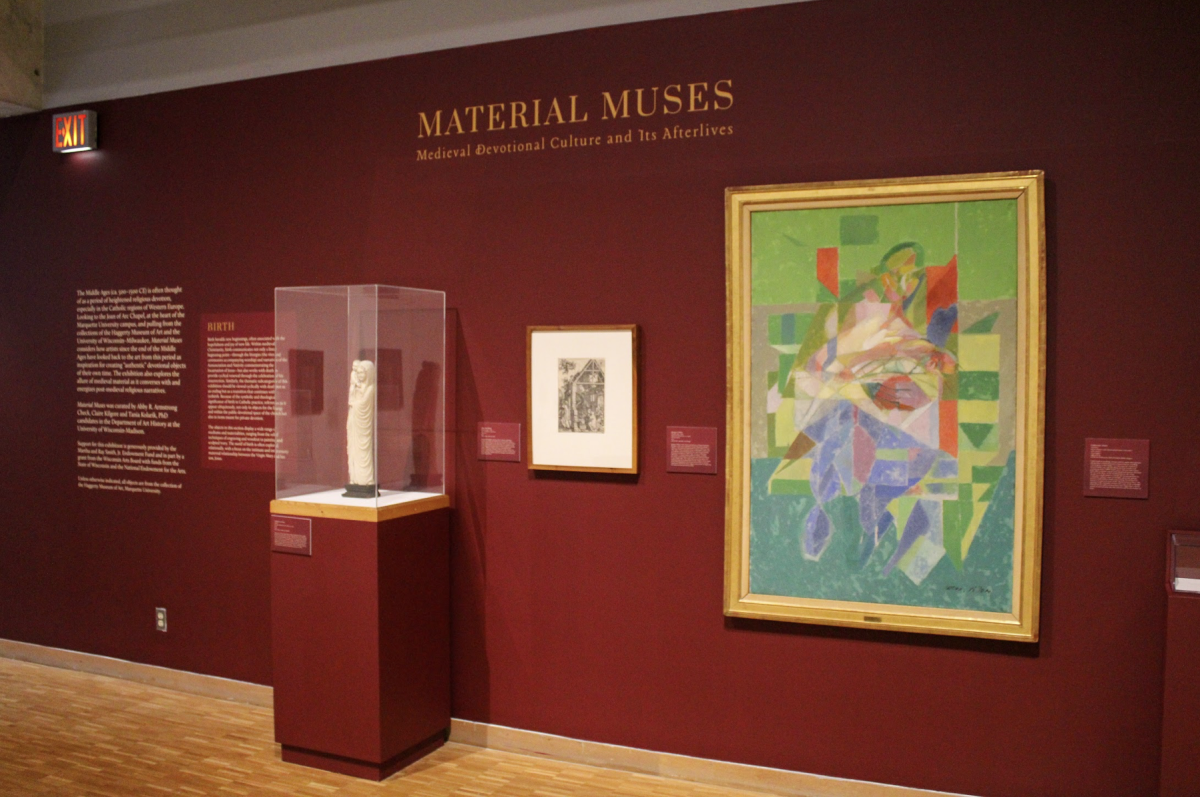Between the Raynor Memorial Libraries and the Haggerty Museum of Art, Marquette has a large collection of valuable artifacts that many students don’t know about.
Marquette does very little to show off these artifacts or to promote them. Since these artifacts aren’t prevalent in student’s daily routines, Marquette’s possession of these items is seldom known.
For instance, the Raynor Memorial Library displayed an exhibit for the 30th anniversary of the destruction of the Berlin Wall. It included a piece of the wall.
The Berlin Wall, which divided Berlin from 1961-89, was one of the most important pieces of the Cold War and 20th-century history. Yet, when a piece of that history was placed near the main staircases of Raynor Memorial Library, it seemed that students couldn’t care less. Very little text was present to draw students in. Not only did the library do an inadequate job of promoting the fact that they had the artifact, but the display itself appeared to just be an out-of-context collection of movies about the Cold War next to a piece of broken concrete.
Whenever I went into the library during the exhibit’s residency, I never saw anyone even approach it despite it’s proximity to the main staircases. Not once did I see someone stop to look at it, and no students I talked to knew why it was there due to a lack of an explanation for its placement. More students would probably stop to look at the exhibit if they knew why it was there, but with little text in the exhibit, it just seems like a random conglomerated placed near the entrance of the library.
Marquette has been gifted many artifacts over the years, but very few people know they are here or why they are owned by Marquette. The library’s archives hold many pieces of Marquette and world history including a collection of artifacts related to “The Lord of the Rings” author J.R.R. Tolkien, and the Haggerty contains beautiful pieces of artwork. However, there aren’t lines at the Haggerty nor is there a crowd around the library’s exhibit waiting to see these artifacts because their existence isn’t common knowledge among students.
Earlier this semester, I did a story about Marquette’s former football program; as when I was researching this story, I was shocked to find out about all the first-hand resources the library had to offer during Homecoming week when the library set up its football exhibit. The library’s archives could have helped my story, yet I wasn’t able to use any of their information because I didn’t know it existed as I, a first-year, have never been informed about the various artifacts in Marquette’s possession.
While the library’s website does include a section about all of the artifacts it possesses, this information isn’t searchable through the main page’s search bar. Instead, the information about the library’s artifacts can be found in the “About” section of the Raynor Memorial Libraries website, which includes information about some of the collections the library has. If a student did not know about this section, they would have a hard time finding information within library-owned materials as the website implies that this search bar can access everything the library has to offer.
The library doesn’t promote these artifacts either; it just sets them up and hopes people look at them. There are no posters or signs. The library could ask professors to promote the collections in the ways it does for other library services such as the Ott Memorial Writing Center and the available books by showing students how to ask an archivist questions about Marquette-owned artifacts. Even then, the general student population outside of specific majors related to certain artifacts would never hear about them.
If a student does not know about any of the archives’ possessions or even the archives’ existence, a student would never know about the Ask an Archivist system. When the university and library don’t promote their artifacts, it is difficult for students to utilize these resources.
Marquette University, the Haggerty Museum of Art and Raynor Memorial Libraries aren’t being used to their potential, and it is the look of advertising of these artifacts that is to blame. Marquette needs to better publicize these artifacts by promoting them and allowing students to easily access them. Having these artifacts on display for a short amount of time with very little explanation allows the importance of these artifacts to go to waste.
If Marquette were to promote their artifacts through their newsletters, posters and signs around campus or recruitment materials for incoming students, these artifacts could not only promote interest in the university through unique opportunities with rare artifacts but also allow students to engage with the cultural significance these artifacts can share with Marquette students.
This story was written by Kevin Schablin. He can be reached at kevin.schablin@marquette.edu.







